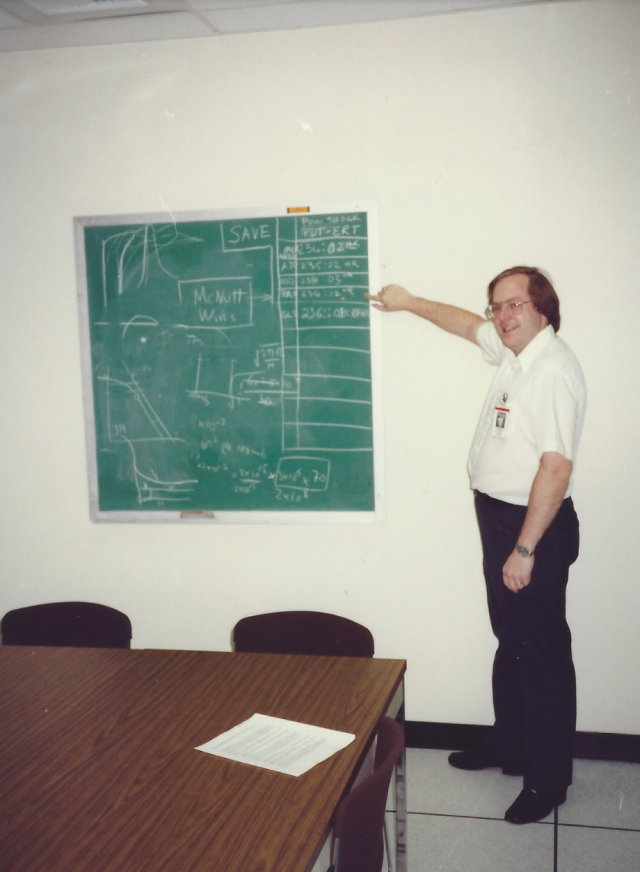We eagerly waited to reach the boundary of Neptune’s influence in the solar wind and set up a prediction pool to guess when Voyager 2 would encounter the “bow shock” of the planet’s magnetosphere. A list was created on a chalkboard in one of the rooms at the Jet Propulsion Laboratory assigned to the science teams. The prediction was in Pacific Daylight Time-Earth Received Time (PDT-ERT), which was when the data arrived back at JPL in California.
Only five entries were made, starting from Day of Year (DOY) 235, which is August 23rd in non-leap years. The one-way light time during the flyby was 4 hours and 6 minutes. Converting the spacecraft event time (SCET) from PDT-ERT to Greenwich Mean Time (GMT) required adding 7 hours, then subtracting 4 hours and 6 minutes to adjust for the spacecraft’s time.
My guess was later than the others, anticipating a smaller magnetic field that would be seen closer to the planet. I predicted 12 noon on DOY 236, which translates to August 24th at 1454 GMT-SCET. The Plasma Science experiment actually detected the bow shock on August 24th at 1438 GMT-SCET, not too far off from my guess.
It is truly remarkable that this event was documented and that a photo of the prediction list still exists, capturing our excitement and anticipation of Voyager 2’s encounter with Neptune’s magnetosphere.
